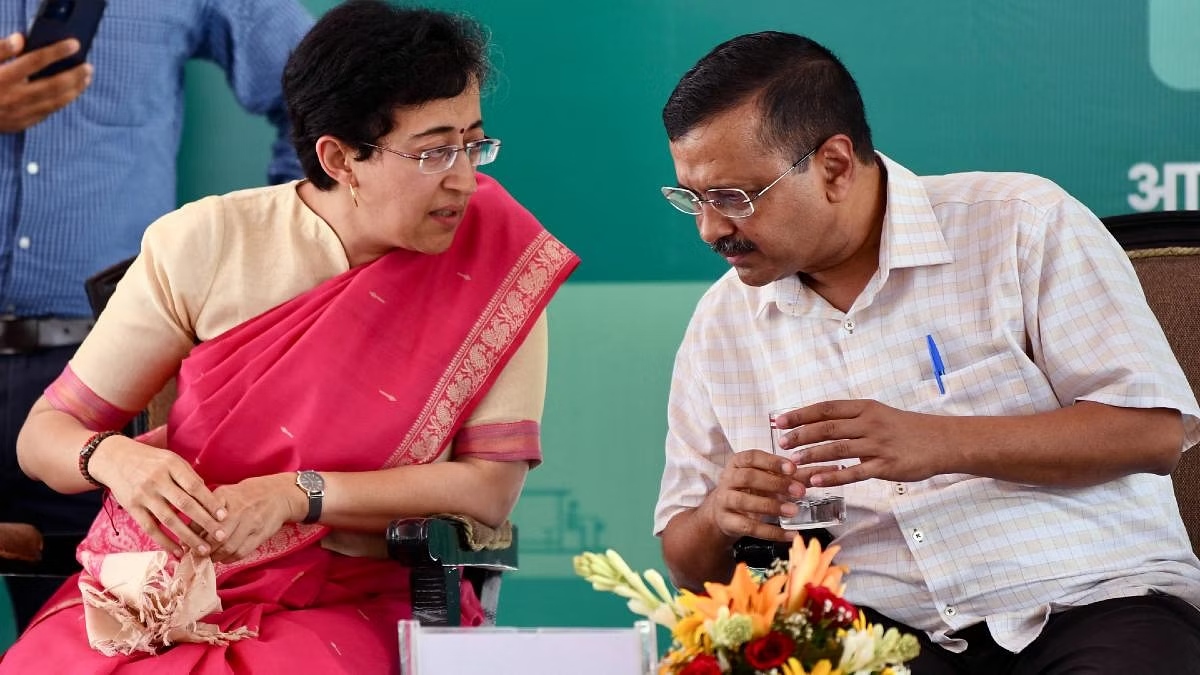The Aam Aadmi Party (AAP) is once again at the center of a political storm in Delhi, this time involving allegations of Chief Minister Atishi’s eviction from her official residence. The claims have sparked controversy, raising serious questions about AAP’s governance and motives. Atishi moved into Bungalow No. 6 on Flagstaff Road in Delhi’s Civil Lines area, just days after Arvind Kejriwal resigned as Chief Minister. The AAP alleges that Delhi’s Lieutenant Governor (LG) ordered Atishi’s belongings to be removed and the house sealed. However, this controversy seems to go much deeper, highlighting systemic issues within the party’s leadership. The heart of the matter lies in a series of conflicting narratives. According to media reports, the Public Works Department (PWD) raised concerns that the keys handed over by Kejriwal upon vacating the house were later taken back by Atishi without allowing the department to complete its inventory check—a mandatory procedure. This incident raises doubts about the transparency and accountability of AAP’s top leaders, especially considering the controversial legacy of the so-called “Sheesh Mahal,” the former residence of Kejriwal. Constructed at an alleged cost of over Rs 40 crores during the height of the COVID-19 pandemic, the residence’s extravagance stands in stark contrast to Kejriwal’s claims of leading a simple “Aam Aadmi” lifestyle.
The so-called “Sheesh Mahal” has already been a subject of public outrage, with reports alleging illegal encroachment on adjacent government plots and wasteful expenditure on lavish interiors. These revelations prompted an inquiry, casting a shadow over AAP’s image as a party that champions the cause of the common man. Kejriwal’s residence has now come under scrutiny for not only its luxurious setup but also the lack of adherence to legal protocols. Meanwhile, Arvind Kejriwal’s troubles have been compounded by his arrest in the multi-crore Excise Policy scam, where he has been named as the “Kingpin” in the FIR filed by central agencies. His imprisonment for nearly six months and his attempts to justify his extravagant lifestyle have left many questioning his integrity. Kejriwal’s grand promises of living a modest life have been shattered by the reality of his ostentatious lifestyle and dubious political maneuvers. The PWD, which operates under the Chief Minister’s control, confirmed in an official statement that Kejriwal had initially handed over the keys to the concerned officer, only for Atishi to retrieve them without allowing the department to follow standard procedures. This unauthorized action led to the LG intervening as the constitutional authority, resulting in the sealing of the residence. The LG’s actions appear to be a response to procedural violations, not a politically motivated move as claimed by AAP.

What is striking is AAP’s attempt to spin this episode into a political narrative, suggesting a vendetta by the central authorities. The party’s strategy seems like a desperate attempt to shift focus from their poor performance in neighbouring Haryana, where they contested 88 out of 90 seats but ended up losing deposits in 86 constituencies. Such a humiliating defeat has clearly dented AAP’s political standing, and this new controversy looks more like a ploy to regain sympathy and divert attention from their electoral failures. Given the facts, it is difficult to see this as anything but a poorly staged drama by a party that has thrived on creating sensational narratives. The irony is that while Kejriwal once positioned himself as an anti-corruption crusader, his own leadership has now come under the scanner for financial irregularities, misuse of power, and double standards in governance. The sealing of the “Sheesh Mahal” has exposed not just procedural lapses but the hypocrisy of AAP’s top brass. AAP’s image as the “famed anarchist” party that thrives on controversy is losing its sheen. Kejriwal’s political maneuvers and his party’s constant blame game are starting to wear thin among the public. This controversy surrounding Atishi’s eviction may have been intended as a distraction from their governance failures and electoral setbacks, but it has only further dented their credibility. The party’s attempt to paint itself as a victim of political vendetta falls flat when viewed against the backdrop of procedural violations, extravagant lifestyles, and a growing list of scandals. In the end, AAP’s efforts to project itself as the voice of the common man appear hollow when their leaders live in luxury and bend rules for personal gain. As the political drama unfolds, it becomes increasingly clear that AAP’s brand of politics—built on disruption, allegations, and theatrics—may not find the traction it once did. The party must now confront the reality that the public’s patience with their antics is wearing thin, and their image of being the voice of the people is rapidly fading.






